Portrait of Princess Élisabeth of France painted by Joseph Ducreux
Just when a thunderstorm is about to begin, the reader may have noticed a bird seeking refuge under the branches of a tree which the lightning threatens; this dove is like the young royal maiden, who, when the Revolution broke out, was living calmly and happily at Montreuil, an angel of innocence and virtue, whose mere name is a symbol of holiness—Madame Elisabeth.
Before the thunder begins to mutter and the lightning to flash, let us rest our eyes for a moment on this noble and worthy girl, soon to be a martyr; on this spotless lamb, one of the most touching victims of the Revolution. The time is approaching when Marie Antoinette will find herself abandoned by nearly all her defenders, her relatives, her servants. Even the women whom she had most honored with her friendship will leave her, either of their own choice, or in obedience to the demands of the multitude. But there is one woman who will not abandon her, one woman whose heroism will grow with the danger, who will remain full of devotion, even to death; this woman is the worthy sister of Louis XVI, the worthy descendant of Saint Louis.
Madame Elisabeth playing the harp, Painting by Charles Leclercq
In all history there are few figures so sympathetic, so gentle; few heads that wear so pure and bright a crown of glory. Are not such beings a sort of compensation for the evil, an expiation of crime in times of horror?…
The future martyr had known sorrow from the cradle. She was born May 3, 1764, and before she was three, had lost both father and mother…. Religion so softened and modified her character that she became a saint. Her genuine piety was not at all severe; her devoutness was the expression of a noble soul in full light. Her conscience was as calm and clear as her face. She liked to pray with the young girls of Saint Cyr, or with the Carmelite Sisters of Saint Denis, among whom was her aunt, Madame Louise de France, in religion, Mother Thérèse of Saint Augustine.
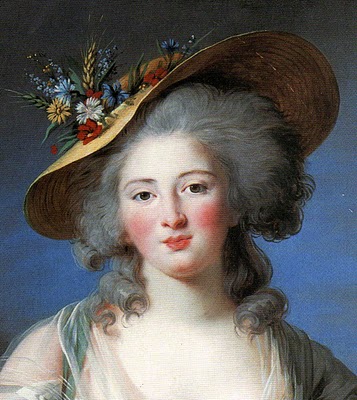 “Not satisfied with coming often to be edified with her aunt’s virtues,” writes one of the Carmelites, “she devoted herself to the humblest functions of a convent life. One day when she had arrived at an early hour at the nunnery, she expressed a desire to serve the dinner to the whole sisterhood; our revered Mother suggested to her this exercise, which suited her perfectly. She went into the refectory, put on an apron, and after kissing the earth, went to the kitchen door; she was given a tray on which was set the sisters’ food. She distributed it to them carefully, when suddenly the tray tipped, and some of the food fell on the floor. Her embarrassment was intense; to relieve her, the Prioress said, ‘My niece, after a blunder like that you should kiss the earth.’ At once Madame Elisabeth prostrated herself, and then continued her task without further incident. It was a real pleasure to our venerable Mother to see the virtues of her family reappearing in this young princess.” The sister of Louis XVI, serving the meal of the Carmelites along with the daughter of Louis XV, is a subject to be recommended to artists fond of painting religious pictures.
“Not satisfied with coming often to be edified with her aunt’s virtues,” writes one of the Carmelites, “she devoted herself to the humblest functions of a convent life. One day when she had arrived at an early hour at the nunnery, she expressed a desire to serve the dinner to the whole sisterhood; our revered Mother suggested to her this exercise, which suited her perfectly. She went into the refectory, put on an apron, and after kissing the earth, went to the kitchen door; she was given a tray on which was set the sisters’ food. She distributed it to them carefully, when suddenly the tray tipped, and some of the food fell on the floor. Her embarrassment was intense; to relieve her, the Prioress said, ‘My niece, after a blunder like that you should kiss the earth.’ At once Madame Elisabeth prostrated herself, and then continued her task without further incident. It was a real pleasure to our venerable Mother to see the virtues of her family reappearing in this young princess.” The sister of Louis XVI, serving the meal of the Carmelites along with the daughter of Louis XV, is a subject to be recommended to artists fond of painting religious pictures.
Many princes thought of asking for the hand of Madame Elisabeth….
M. Feuillet de Conches has published some of the letters written by Madame Elisabeth to her friends….
Madame Elisabeth, sister of Louis XVI, distributing milk near Versailles by Richard Fleury François
The correspondence is full of pious and exalted thoughts. One might say that the sister of Louis XVI already foresaw the approaching tempests, and was asking Heaven for strength to face them, with alarm. In many of the letters there is a sort of anticipation of her heroic endurance. It is easy to see that this young girl was no ordinary person; that deep in her heart lay hidden treasures of resignation, piety, and courage. Touching reflections, wise counsels, Christian meditations, abound especially in her letters to Madame Marie de Causans….
February 9, 1786, she wrote to Madame Marie de Causans: “Let us turn simply to God. May faith be given us to see that he never abandons his children! If we feel too weak for his service, if we are discouraged, let us not rely on ourselves alone; let us say to him: ‘Thou, O God, seest all my heart; it is wholly Thine. I do not know whether Thou acceptest all the sacrifices which I make and intend; but Thy Son died in atonement for my faults. Look upon Him, O God, and even on the Cross, where our cruelty and sins fastened Him; hear Him who intercedes for us, who consoled the penitent thief. I would imitate him, O God, and recognize Thy sovereign power, and believe that, whatever may befall me, Thou wilt not desert me.” Madame Elisabeth ascended the scaffold; but as she climbed the steps, the God of mercy did not desert her, and death was rather an entrance into glory than a punishment….
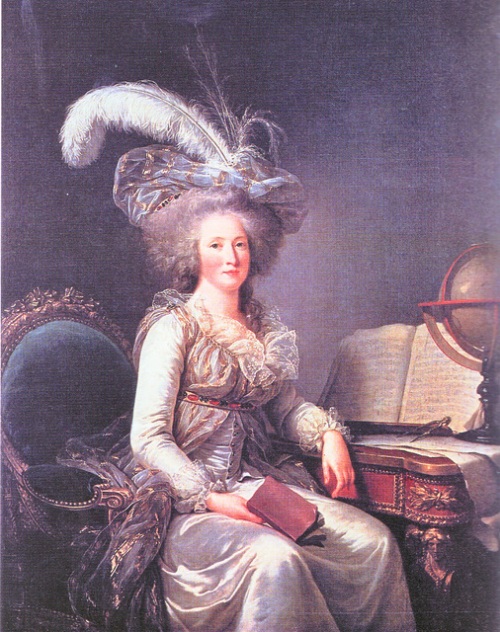 The signal is given; the tumbrels start for the Place Louis XV. On the way, Madame Elisabeth continues her exhortations. They reach the place of execution….
The signal is given; the tumbrels start for the Place Louis XV. On the way, Madame Elisabeth continues her exhortations. They reach the place of execution….
The first name called by the executioner was that of Madame de Crussol. She bowed to Madame Elisabeth. “Ah, Madame! If Your Royal Highness would deign to kiss me, I should be perfectly happy.” “Very gladly,” answered the Princess, “and with all my heart.” All the other women enjoyed the same privilege. The men bowed and kissed respectfully the hand of the daughter of kings. One man in the crowd about the guillotine shouted out, “There’s no need for all this salaaming; there she is now, like Austrian!” Madame Elisabeth heard him, and then learned for the first time that she was to meet Marie Antoinette in heaven. One after another the victims ascended the scaffold, and went to the bloody ceremony as the faithful went to the Holy Table. Orders had been given that Madame Elisabeth should be executed the last, in the cruel hope that the twenty-three heads falling before her eyes might perhaps break her courage. It was an unfounded hope. While the sacrifice was going on, she recited the “De Profundis” without a change of color. When the turn of the twenty-third victim, the last but one, came, the saintly Princess said, “Courage! Courage and faith in God’s mercy.” Then it was her time to die, or, rather, to enter into eternal life.
Madame Elisabeth facing the revolutionaries and claiming to be the Queen; at her side, two servants trying to save her by revealing the truth; in the background, on the left, Louis XVI, accompanied by guards, leaves the room. c.1794
The noble virgin ascended the steps of the scaffold with unfaltering step. She betrayed no emotion, save at the moment when the executioner wanted to take off the neckerchief that covered her breast. “In the name of your mother,” said Madame Elisabeth, “do not uncover me.” Those were her last words. The soul of Madame Elisabeth was in heaven. All the spectators were moved. Even the knitting women, the Furies of the guillotine, ceased their uproar, and the crowd dispersed in sadness. That day there were around the scaffold none of the usual cries of “Long live the Republic.”
Madame Elisabeth on the scaffold before her execution
Imbert de Saint-Amand, Marie Antoinette and the End of the Old Régime, trans. Thomas Sergeant Perry (New York: Charles Scribner’s Sons, 1914), pp. 135-144, 155-156
Short Stories on Honor, Chivalry, and the World of Nobility—no. 171

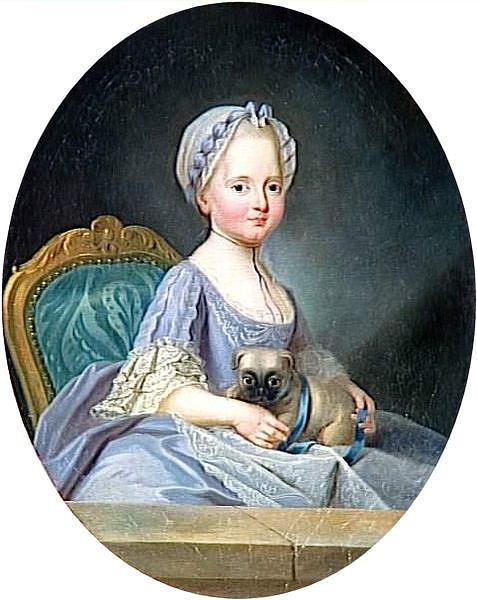
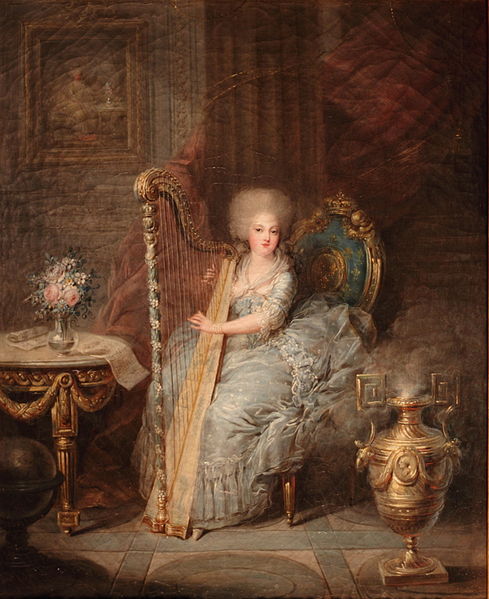
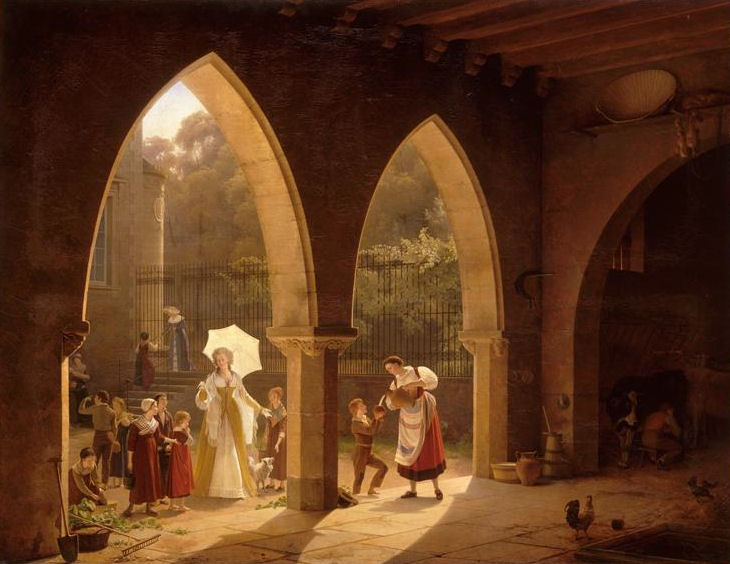
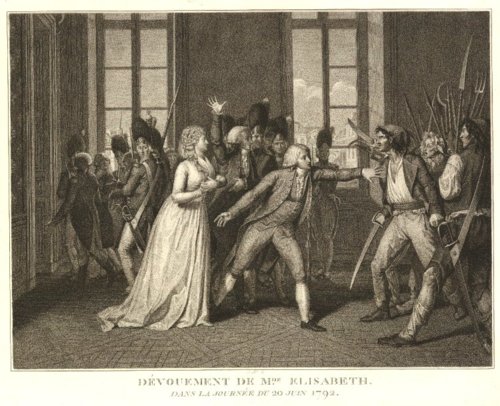
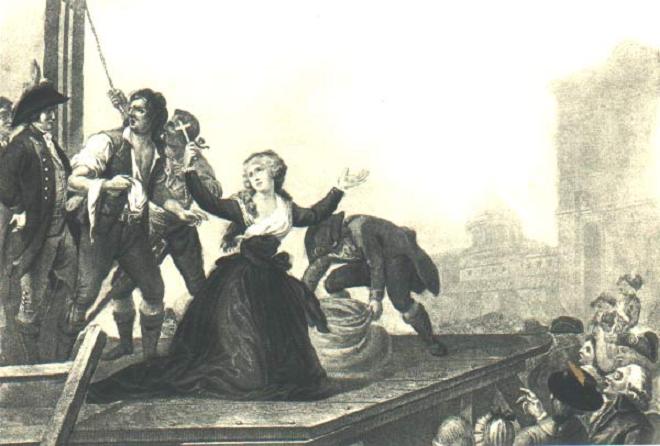
No comments:
Post a Comment